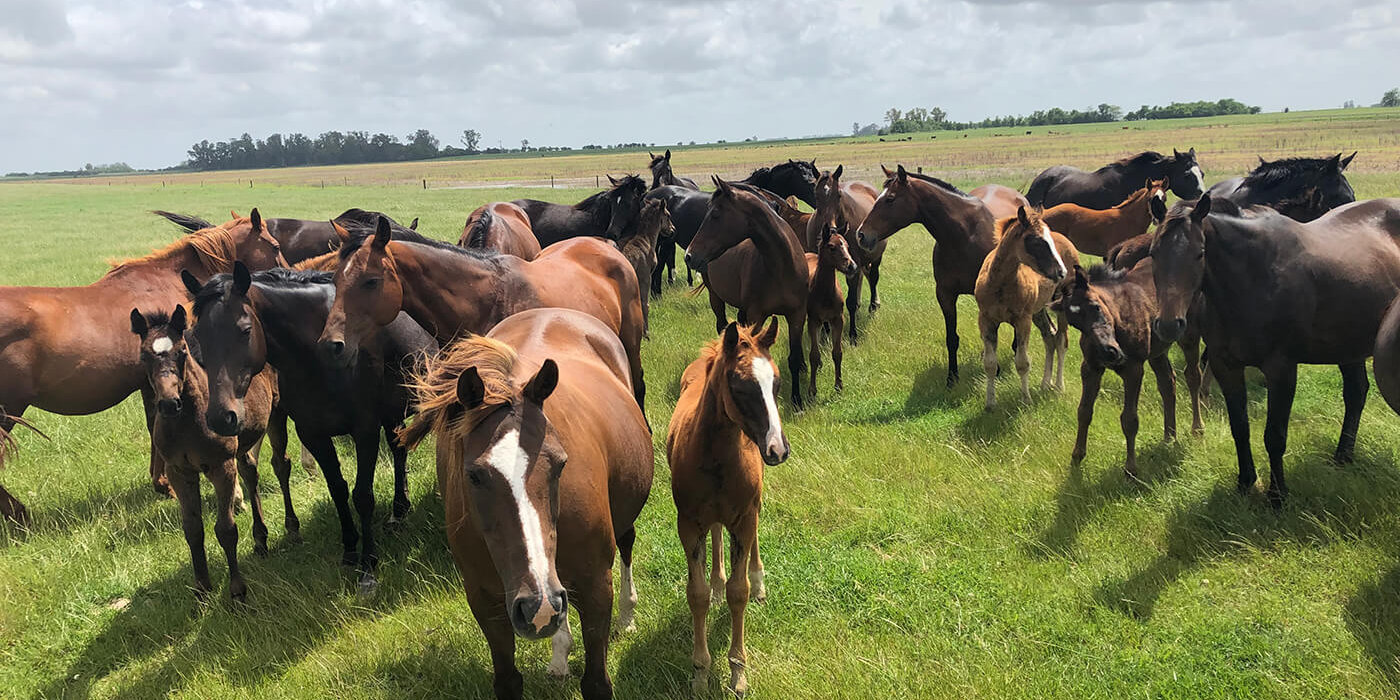Breeding Polo Program
The El Venado breeding program has been running for many years, and it’s evolved a lot in that time. Currently, Fede keeps around 24 broodmares and 3 stallions, and each year they produce a number of foals (usually around 16-18). The mares and foals live together in the fields until the time comes for the foals to be weaned and ultimately broken and made into polo ponies.
“We usually put the stallions in with the mares around September, October,” says Fede. “That’s the best time for them to become pregnant. That’s because it means the foals will be born in the Spring when the days are long, the weather is nice and the grass is good.”

Over the years El Venado has produced several hundred foals, some of which have gone on to play high goal polo including prestigious tournaments like the Argentine Open at Palermo in Buenos Aires. El Venado horses have also been sold to players across the world, mainly to the USA but also the UK, Germany, France, Nigeria, India and Malaysia.
While the natural breeding approach still produces many successful polo ponies, there’s no doubt that technology has changed the breeding world drastically, especially in Argentina. In the early 2000s, we saw the rise of cloning – with famous 10 goal player Adolfo Cambiaso cloning his famous mare Cuartetera. 15 or so years on, cloning has become almost commonplace in high goal polo, although it’s still an extremely expensive way to go.
Embryo Transfer
Another method that has become increasingly popular is embryo transfer – when an egg is taken from a top playing mare, fertilised in a tube, and implanted as an embryo into a surrogate mare (in Argentina this is called the receptor). The great thing about embryo transfer is that it allows the best mares to continue playing uninterrupted, while also producing up to two foals each year.
Fede started sending his mares to an embryo transfer centre for implantation in the early 2000s, and has had some great success with this approach. This year, he took the next step and began undertaking this process at home, with the expert assistance of our equine vet Fernando Vedoya.

The process
Is quite delicate and involves several precisely-timed visits from Fernando. First, he visits to see which mares are already in foal and which aren’t (these will be our potential receptor mares). This involves a thorough examination and ultrasound. On this visit, he will also inject the receptor mares with hormones to artificially stimulate ovulation (as the need to be ovulating for a donor embryo to implant). It’s essential that the receptor mares are ovulating during the embryo transfer, otherwise the embryo won’t implant – and for this reason, we try to have 3 potential receptors per donor mare.
On Fernando’s next visit, when the receptor mares are ovulating (usually around a week later), he implants the embryos from the donor mares into the most suitable receptors… and then the waiting game begins!
“What’s interesting about breeding is that you learn over time which mares will give you the best playing ponies,” says Fede. “Some mares will give you a good filly every time, some will give you a good filly and a good colt – but that’s rare. These days I tend to sell the colts and focus on the girls as I prefer them for polo.”
One thing is for sure – we have some promising youngsters here on the estancia and we look forward to seeing how they develop!




